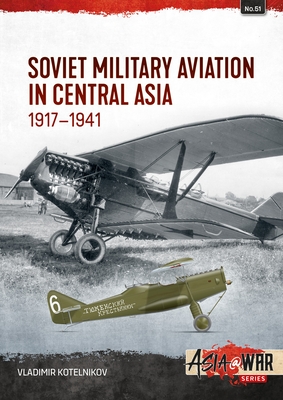Soviet Military Aviation in Central Asia 1917-41

Soviet Military Aviation in Central Asia 1917-41
The Basmachi insurgency, viewed as defenders of traditional tribal values by the local populace, was perceived as mere banditry by the Russian and Soviet authorities. Policing such vast and challenging terrain, where environmental conditions posed significant hazards alongside armed opposition, necessitated innovative approaches. Consequently, the Soviets turned to air power as a means of controlling these remote regions.
Despite inventive tactics, the aircraft employed by the Soviets in Central Asia during the inter-war period were often outdated, worn-out, or repurposed from other theaters of operation. This reliance on obsolete or marginal aircraft highlights the resource constraints faced by the Soviet military during this tumultuous period.
Soviet Military Aviation in Central Asia: 1917-41 offers a detailed exploration of the inter-war use of air power in Soviet Central Asia, drawing from Russian-language sources and photographic archives. The book provides insights into the challenges faced by the Soviet military in maintaining control over the region, accompanied by rare photographs and unique color artworks depicting the aircraft utilized during this era. Through this lens, readers can gain a deeper understanding of the complexities of military strategy and conflict in Central Asia during the early twentieth century.
143.64Lei
143.64Lei
Livrare in 2-4 saptamani
Descrierea produsului
The Basmachi insurgency, viewed as defenders of traditional tribal values by the local populace, was perceived as mere banditry by the Russian and Soviet authorities. Policing such vast and challenging terrain, where environmental conditions posed significant hazards alongside armed opposition, necessitated innovative approaches. Consequently, the Soviets turned to air power as a means of controlling these remote regions.
Despite inventive tactics, the aircraft employed by the Soviets in Central Asia during the inter-war period were often outdated, worn-out, or repurposed from other theaters of operation. This reliance on obsolete or marginal aircraft highlights the resource constraints faced by the Soviet military during this tumultuous period.
Soviet Military Aviation in Central Asia: 1917-41 offers a detailed exploration of the inter-war use of air power in Soviet Central Asia, drawing from Russian-language sources and photographic archives. The book provides insights into the challenges faced by the Soviet military in maintaining control over the region, accompanied by rare photographs and unique color artworks depicting the aircraft utilized during this era. Through this lens, readers can gain a deeper understanding of the complexities of military strategy and conflict in Central Asia during the early twentieth century.
Detaliile produsului










